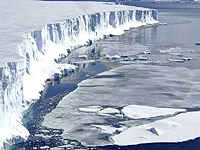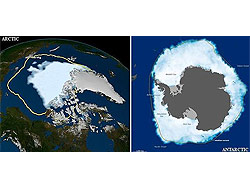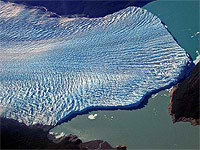La cantidad de hielo que rodea alaAntártida ha crecido en los últimos años en lo que los expertos consideran un posible efecto colateral del cambio climático. Por el contrario, el Ártico sigue perdidendo superficie helada a un ritmo alarmante.
En pleno invierno del hemisferio sur, cuando los pingüinos emperador seamontonan para hacer frente a las bajísimas temperaturas del polo, la masa heladade la Antártida no para de crecer, de forma lenta pero constante,desde la década de los 70. Según los expertos, las causas podrían derivarse del cambio climático y sus repercusiones en los vientos, las corrientes marinas o las nevadas.
Desde finales de los 70, "la superficie de hielo en la Antártica ha aumentado durante el invierno a un ritmo de un 0,6% por década" enrte entre 1979 y 2006, explica Donald Cavalieri, científico de Centro Espacial Goddard de la NASA.
Sus 19 millones de metros cuadrados casi alcanzan el récord de la década de los 70, en que se alcanzó una superficie de 20 millones de metros cuadrados. También ha aumentado el promedio de la extensión de hielo durante todo el año.
Notici9a completa en RTVE (España)
Enlaces a sitios |
| |
Climbing Magazine Climbing Magazine"s Web site contains more than 30 years of rock and ice climbing news, climber profiles, technical information, and gear reviews. You"ll also find message boards, photo galleries, and classifieds
| Cold Regions Bibliography Between 1999 and 2000, this project was carried out under an Interagency Agreement between the Federal Research Division of the Library of Congress and the U.S. Army Cold Regions Research and Engineering Laboratory (CRREL).
|
Descent into the Ice A tem of "glacionauts" ventures into a labyrinth of unexplored anda hazardous glacier caves on France"s Mont Blanc
| Glacier and Permafrost Hazards in Mountains – GAPHAZ Scientific Working Group of the International Association of Cryospheric Sciences (IACS) and the International Permafrost Association (IPA). Department of Geosciences University of Oslo
|
Glacier hazards The experience and data on glacier disasters in Switzerland has been systematically collected in the past two decades, and historical sources were analyzed.
| Glacier Hazards From Space Glacier hazards represent a continuous threat to human lives and infrastructure in mountain regions.
|
Glacier Hazards in Perú The floods, known in Perú as aluviónes, come with little or no warning and are composed of liquid mud that generally transports large rock boulders and blocks of ice.
| Glaciers and Glacier Hazards Glaciers and Glacier Hazards Glaciers and Ice Sheets and Volcanic Eruptions, USGS/Cascades Volcano Observatory, Vancouver, Washington
|
Glaciers online Glaciers online offers photos and summary explanations concerning glaciers from all over the world. The primary goal of our project is to enrich and stimulate the teaching of Earth Science and Physical Geography, in particular glaciology.. Jürg Alean & Mi
| Global Land Ice Measurements from Space GLIMS (Global Land Ice Measurements from Space) is a project designed to monitor the world"s glaciers primarily using data from optical satellite instruments, such as ASTER (Advanced Spaceborne Thermal Emission and reflection Radiometer).
|











 Imagen: Agencias / Internet
Imagen: Agencias / Internet





